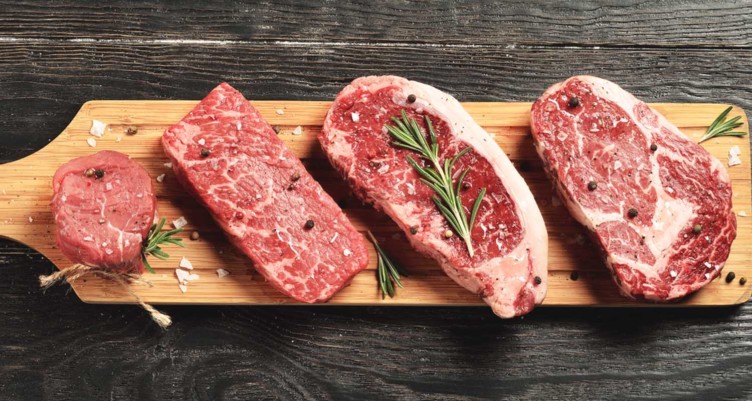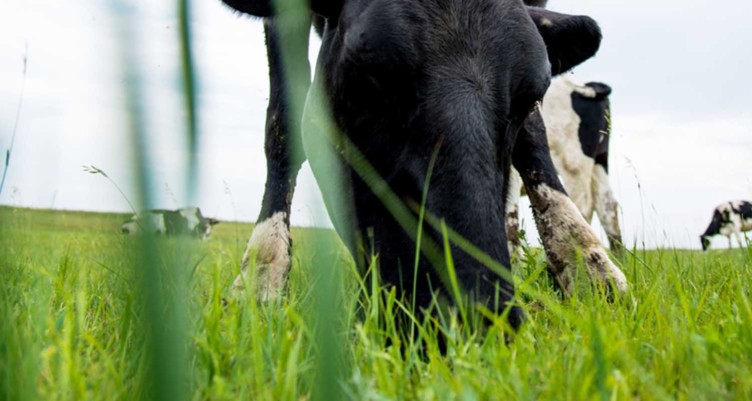Which Beef is Best: Wagyu, Aged, or Grass-Fed?

Have you tried Japanese wagyu beef?
It is a type of beef designed to melt in your mouth because the muscle is completely striated with fat. Wagyu beef is so decadently fatty that you can cut it with a fork. Taste-wise, it almost has more in common with foie gras than with a steak.
Sounds great initially, but there are some things about wagyu you may not know. In a Bloomberg article discussing the merits and shortcomings of Wagyu beef, Chef Ken Yamada sums up my sentiments about it exactly:
“I don’t think anyone can eat a slab of it and feel comfortable,” says Yamada, who was born in Shimoda, south of Tokyo, and moved to the U.K. in 1988. “I may have been in England far too long, but I prefer a decent, British, aged steak.”
What many people overlook is that farmers make Wagyu as fatty as possible by feeding their cows huge amounts of grain for the last 300-500 days of their lives. Some farmers even add wine and beer to further increase fat content. The result is that a wagyu cow’s muscle tissue is thoroughly marbled with fat. Unfortunately, it’s the kind of fat that is not good for you. The mold toxins in all that grain are bad for the cow and end up in its fat [1], and then in you, which would mean wagyu beef has a disproportionately high toxin load.
To be fair, it’s also delicious, and it’s such an expensive delicacy that you probably don’t eat it every day. If you’re going to have it as a special treat, I recommend some activated charcoal to help bind the toxins.
What about aged beef?
Aging beef allows Thamnidium mold to grow into a crust on the outside. Thamnidium shoots tendrils into the meat, supporting enzymes that digest it [2]. The process gives aged beef a different flavor and makes it tender.
The downside is that aging beef creates high levels of histamine and other biogenic amines, compounds that cause inflammation, allergic responses, and food cravings for a lot of people [3]. Thamnidium itself doesn’t produce mold toxins, but other molds that are toxic to humans, like Rhizopus and Mucor genera, can grow on aged beef, depending on the environment it is aged in [2].

Why organic, grass-fed beef is best
That Bloomberg article about wagyu beef also interviewed Mark Schatzker, a meat expert who just wrote a book about his journey to find the best beef in the world. He says the best he’s found is organic, grass-fed beef from Alderspring Ranch, a small ranch in Idaho.
I’d have to agree with him. I’ve been buying my beef from Alderspring since 2005, and the head guy there, Glenn, has been on Bulletproof Radio to talk about the importance of grass-fed meat for our ecosystem.
After years of searching for the perfect steak that gives the most reliable food high in the best flavor, I recommend grass-fed ribeye from the height of the season, butchered and frozen between three and seven days after slaughter. Listen to the BP Radio episode with Alderspring and you’ll also learn that details like how quickly the meat is cooled after butchering really affect how tender it is.
Why does grass-fed make such a difference? I break down the reasons, one-by-one, in this article. The short version is that grass-fed beef is more nutrient-dense, it’s higher in anti-inflammatory compounds, and it lacks the pesticides residues and mycotoxins that you’ll find in grain-fed beef. Grass-fed beef is also more environmentally sound and contributes to better soil instead of depleting it. Plus, the taste is exceptional. If you haven’t had a grass-fed steak yet, you owe it to yourself to try one. You’ll feel the difference after you eat it. For a guide to cooking the perfect grass-fed steak, along with plenty of other recipes, check out this free complete Bulletproof meal plan.
Steak really is an art. Like every other thing we eat, it starts with the soil, and ends with how it makes you feel. Every little step matters!
What’s your favorite steak on the planet?
- https://shaverlab.dysci.wisc.edu/wp-content/uploads/sites/87/2015/04/pennstatemold.pdf
- https://www.ncbi.nlm.nih.gov/pmc/articles/PMC4872334/



